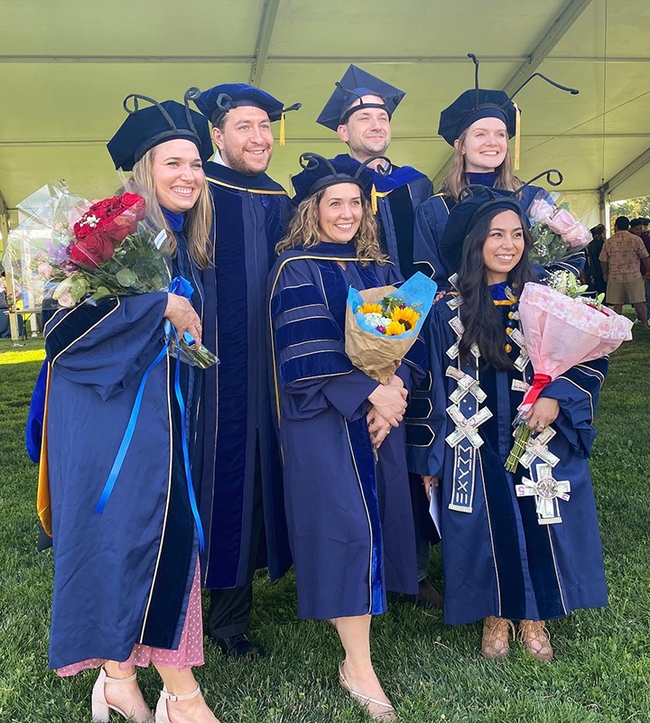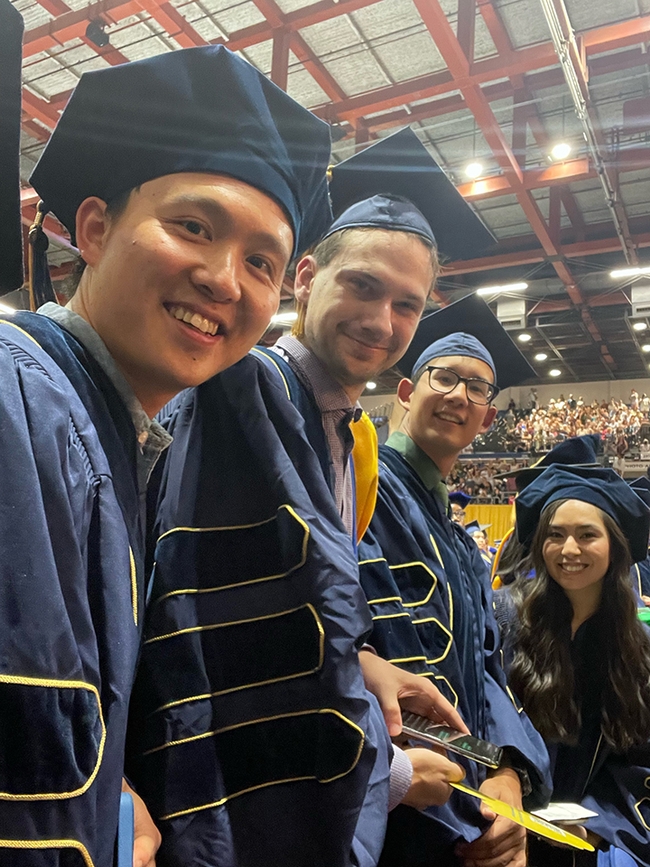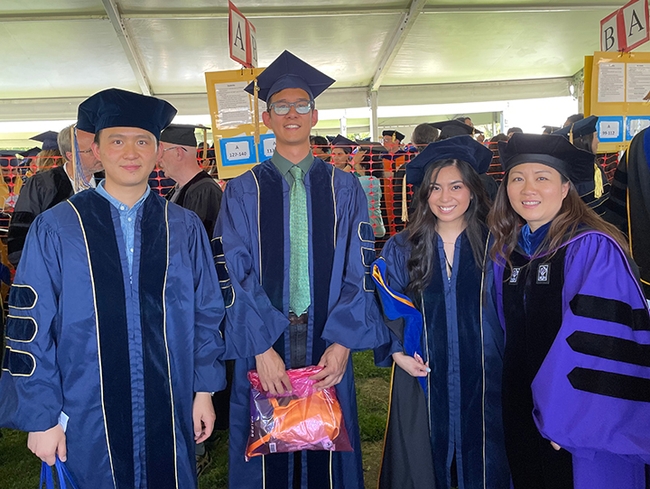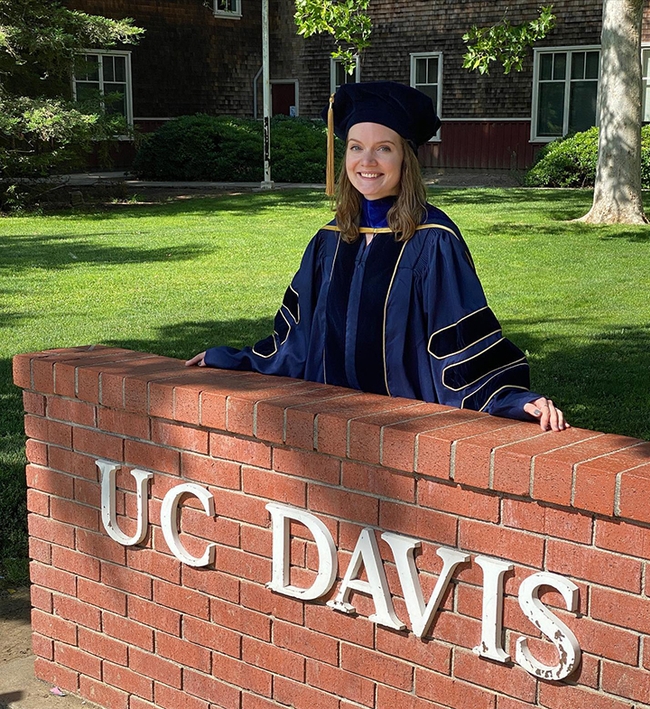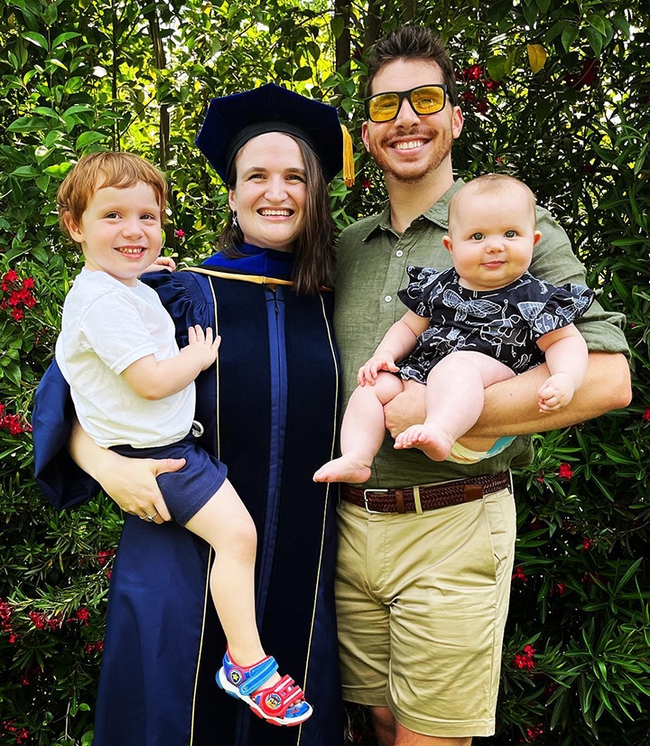- Author: Kathy Keatley Garvey

The open house, themed "Social Wasps," is free and family friendly. Parking is also free.
Kimsey defines social wasps as "wasps that live together and cooperate in a colony, with female workers and a queen; only the queen has babies."
What drew her to study social wasps? "I just like stinging things in general and their anatomy and social behavior are really interesting."
Kimsey lists some of the common myths about social wasps as:
- They are often seen as malevolent beings out to get you and will chase you
- That they serve no purpose except to annoy us
- If you're allergic to bee stings you'll be allergic to wasp stings
- A copper penny place on a sting will make it go away
The public should know that social wasps "provide valuable ecosystem services; do pest control, and assist in nutrient recycling and pollination," she said.
"There are about 2,000 described species of social wasps worldwide," Kimsey said, and probably around 500 species undescribed.
The Bohart Museum has approximately 50,000 vespids in its collection, "and clearly the most popular is the Northern giant hornet, Vespa mandarinia," she said. The press dubbed it "Murder hornet." The Entomological Society of America recently changed its common name, "the Asian giant hornet," to "northern giant hornet."
The hornet, considered the world's largest hornet, is native to Asia. It was first detected in the Pacific Northwest in 2019, and with nests found in 2021.
Kimsey is a recognized authority on insect biodiversity, systematics and biogeography of parasitic wasps, urban entomology, civil forensic entomology, and arthropod-related industrial hygiene. She holds bachelor and doctoral degrees from UC Davis. She joined UC Davis entomology faculty in 1989, and has served as director of the Bohart Museum since 1990.
She plans to retire this year, but not from research and public service.
Kimsey served as president of the International Society of Hymenopterists from 2002-2004, and as a member of the board of directors of the Natural Science Collections Alliance in 2000 and 2001. The Pacific Branch, Entomological Society of Ameica (PBESA) singled her out for its highest honor, the C. W. Woodworth Award, in 2020. She received the PBESA Systematics, Evolution, and Biodiversity Award in 2014 and was a member of 'The Bee Team' that won the PBESA Outstanding Team Award in 2013. The UC Davis Academic Senate honored her with its Distinguished Scholarly Public Service Award in 2016 in recognition of her outstanding work. She received the UC Davis College of Agricultural and Environmental Sciences (CA&ES) Exceptional Faculty Award in 2023.
The Bohart Museum also houses a live "petting zoo" (Madagascar hissing cockroaches, stick insects, tarantulas and more), and an insect-themed gift shop.
For more information, contact the Bohart Museum at bmuseum@ucdavis.edu or access the website at https://bohart.ucdavis.edu
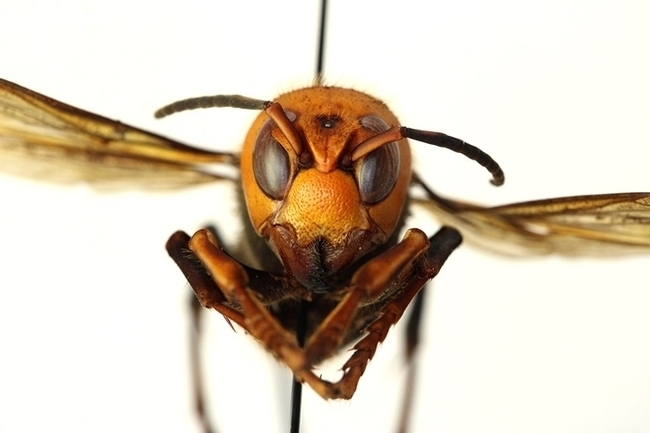
- Author: Kathy Keatley Garvey
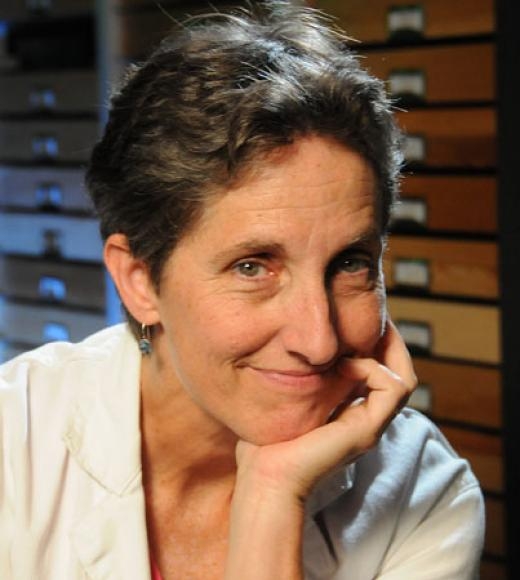
Kimsey, a recognized authority on insect biodiversity, systematics and biogeography of parasitic wasps, urban entomology, civil forensic entomology, and arthropod-related industrial hygiene, is a 34-year member of the UC Davis entomology faculty and a UC Davis alumna. She has directed the Bohart Museum since 1990.
Kimsey will be honored at the CA&ES Award of Distinction dinner on Thursday, Nov. 2 in the UC Davis Activities and Recreation Center (ARC) Ballroom. The event begins at 5:30 p.m. with a reception, followed by the dinner and awards ceremony. Registration ends Friday, Oct. 27; register online here.
"A renowned hymenopterist and taxonomist, Dr. Kimsey has brought worldwide distinction to our department, college, and the university for her research, teaching, public service, leadership, development funding, mentoring, and outreach," wrote Steve Nadler, then the chair of the Department of Entomology and Nematology, in his June nomination letter. "She works tirelessly to make insects and entomological knowledge more accessible to scientists and the public, and her influence and impact are felt internationally."
When former department chair Richard Bohart (for whom the museum is named), founded the museum in 1946, it was a “hole in the wall” in Briggs Hall that included only 400 insect specimens. Under Kimsey's tenure, it has grown to a global collection of eight million insect specimens in Room 1124 of the Academic Surge Building, 455 Crocker Lane, and is the seventh largest insect collection in North America.
"The importance of what Dr. Kimsey does and the importance of insect specimens in museums cannot be overstated," Nadler wrote. "They are a valuable resource for the agricultural community, public health, forensic entomology, medicine and criminology, environmental biology, and the pest control industry, as well as the public."
The Bohart draws an average of 15,000 visitors a year, adds an average of 30,000 new specimens annually, and loans an average 7000 specimens yearly to scientists worldwide. It supports campus classes with specimens, live insects and exhibits in keeping with its mission: “Understanding, documenting and communicating terrestrial arthropod diversity.”
It is also the home of a year-around insect-themed gift shop (proceeds benefit the Bohart's educational activities) and a live “petting zoo” that includes Madagascar hissing cockroaches, stick insects and tarantulas. Children delight in holding the “hissers” and the walking sticks."
Unlike other directors of insect museums, which are working environments for scientists, Kimsey encourages visits by the public. Says UC Davis doctoral alumna Fran Keller, now a professor at Folsom Lake College: “Lynn….believes that allowing the public in to see the collection, to see scientists working, to talk to entomologists about insects is the most important thing we should be doing as entomologists. Lynn stressed that we should be willing to talk to anyone and provide information to anyone who asks a question about insects or who walks in the museum doors. She has focused on making the collection available for the public to see and to learn about what happens in an entomology museum.”
The Bohart takes its outreach programs to nearly 40 institutions annually. This includes schools, state and county fairs and libraries.
"Dr. Kimsey is a legend not only on the UC Davis campus but is called upon as an insect expert at the state, national and global levels," Nadler wrote. "She consults with international, national and state agencies; she identifies some 2000 insects every year for scientific collaborators, public agencies and the general public; she has answered an estimated 30,000 questions from the public and news media. They include bed bugs, yellowjackets, spiders, moths, butterflies, crane flies and Asian giant hornets (what the news media dubbed 'murder hornets'). She encourages a greater appreciation of insects through the Bohart Museum's many open houses, workshops and lectures. She also directs the support group, the Bohart Museum Society, and writes quarterly newsletters (nearly 100 to date) and fact sheets (80 to date) on insects and other arthropods). She compiled crucial information on human skin parasites and delusional parasitosis, important topics available on her website. The Bohart also sponsors summer BioBoot camps for middle-school and high school students."
Kimsey served as president of the International Society of Hymenopterists from 2002-2004, and as a member of the board of directors of the Natural Science Collections Alliance in 2000 and 2001. The Pacific Branch, Entomological Society of Ameica (PBESA) singled her out for its highest honor, the C. W. Woodworth Award, in 2020. She received the PBESA Systematics, Evolution, and Biodiversity Award in 2014 and was a member of 'The Bee Team' that won the PBESA Outstanding Team Award in 2013. The UC Davis Academic Senate honored her with its Distinguished Scholarly Public Service Award in 2016 in recognition of her outstanding work.
The nominating team described Kimsey as a favorite among the news media, with her ability to translate complex subjects into lay language, and her love of people. Over her 34 years at UC Davis, Dr. Kimsey has granted thousands of interviews to news outlets, including British Broadcasting System, New York Times, National Geographic, Associated Press, and Los Angeles Times.
Kimsey holds two degrees in entomology from UC Davis: a bachelor's degree (1976) and a doctorate (1979). She served served as the vice chair of the UC Davis Department of Entomology in 2005-2006 and again in 2009-2010.
2023 CA&Es Award of Distinction Recipients:
Alumnus of the Year
James Finch '89
Early Career Alumni
Jeffrey Sparks '14
Distinguished Friend of the College
Tony Turkovich
Exceptional Faculty Award
Lynn Kimsey
Exceptional Staff Award
Lisa Nash Holmes
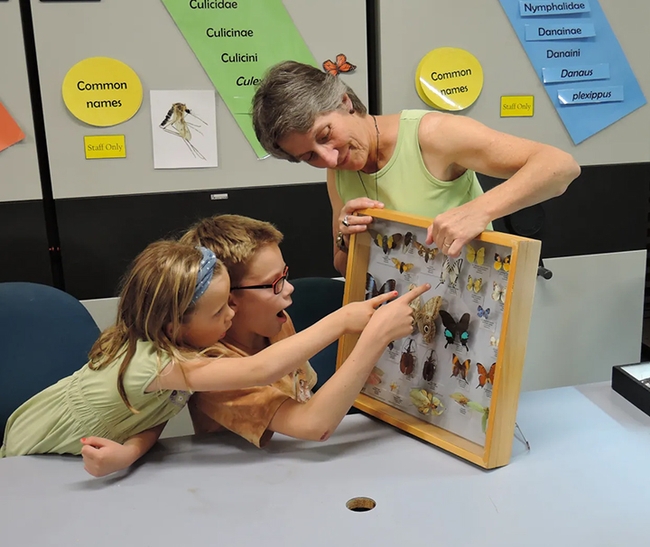
- Author: Kathy Keatley Garvey
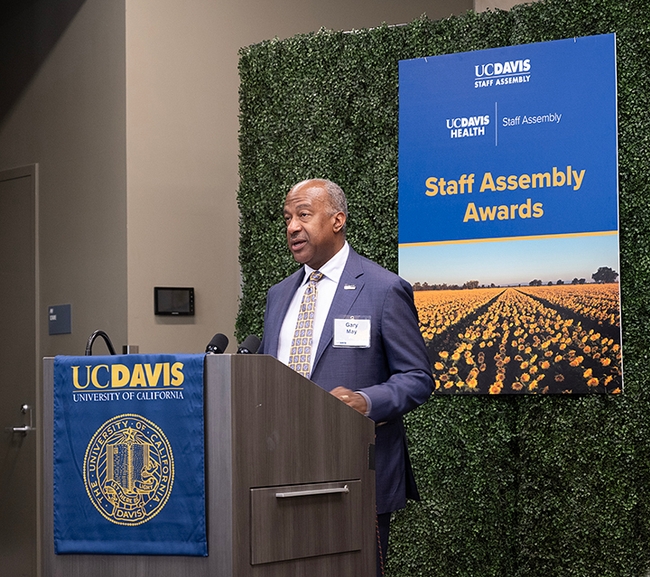
For "outstanding achievements and notable contributions in disseminating science-based beekeeping information since 2016,” the UC Davis-based California Master Beekeeper Program (CAMBP) won a 2023 UC Davis Staff Assembly “Citation of Excellence” and praise from Chancellor Gary May.
CAMBP director and founder Elina Lastro Niño, associate professor of Cooperative Extension and a member of UC Davis Department of Entomology and Nematology faculty, and co-program manager Wendy Mather share the Faculty-Staff Partnership Award.
Niño, UC Extension apiculturist since 2014, founded CAMBP in 2016. Mather joined the program in March of 2018. Also integral to the program is Kian Nikzad, but as a newer employee, was ineligible to be nominated.
The awards ceremony, held Sept. 12 in the International Center on campus, singled out “some of our most exceptional UC Davis individuals and teams,” Chancellor May said in his presentation.
Nikzad accepted the award on behalf of Niño, who was participating in Apimondia in Santiago, Chile, conferring with colleagues at the UC Davis Chile Life Sciences Innovation Center, a part of UC Davis Global Affairs. She was assisting them in developing a sustainable and environmentally friendly science-based beekeeping program to support the success of farmers and beekeepers at all economic levels.
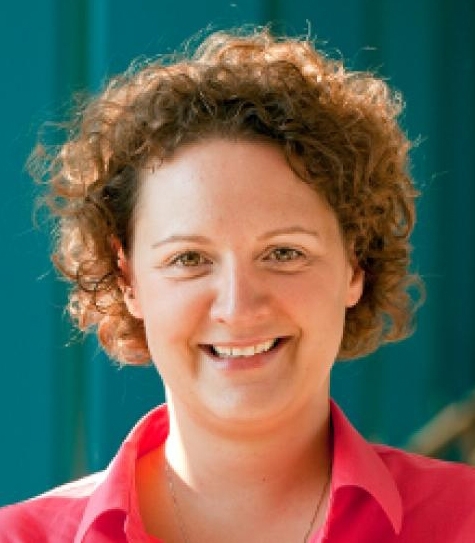
“I truly appreciate everything you do on a daily basis to make UC Davis a wonderful place,” the chancellor said. “You are the heart of UC Davis and I'm grateful for your dedication and hard work...you “contribute to our university's success and make UC Davis a more enjoyable, creative, inclusive and invigorating place to work.”
Nomination. Nominators of "The Bee Team" lauded Niño and Mather for providing a “program of learning, teaching, research, and public service, goes above and beyond in delivering comprehensive, science-based information about honey bees and honey bee health. They continually and consistently develop, improve, and refine their statewide curriculum that educates stewards in a train-the-trainer program to disseminate accurate, timely, and crucial information. Honey bees pollinate more than 30 California crops, including almonds, a $5 billion industry (no bees, no pollination, no almonds). Indeed, California produces more than a third of our country's vegetables and three-quarters of our fruits and nuts. However, colony losses are alarming due to pesticides, pests, predators and pathogens.”
As of Sept. 15, 2023, CAMBP has donated 34,000 hours of volunteer time and served 209,000 individuals in education, outreach and beekeeping mentorship. If a volunteer hour were to be calculated at $26.87, CAMBP has given $913,580 back to California in service of science-based beekeeping and honey bee health.
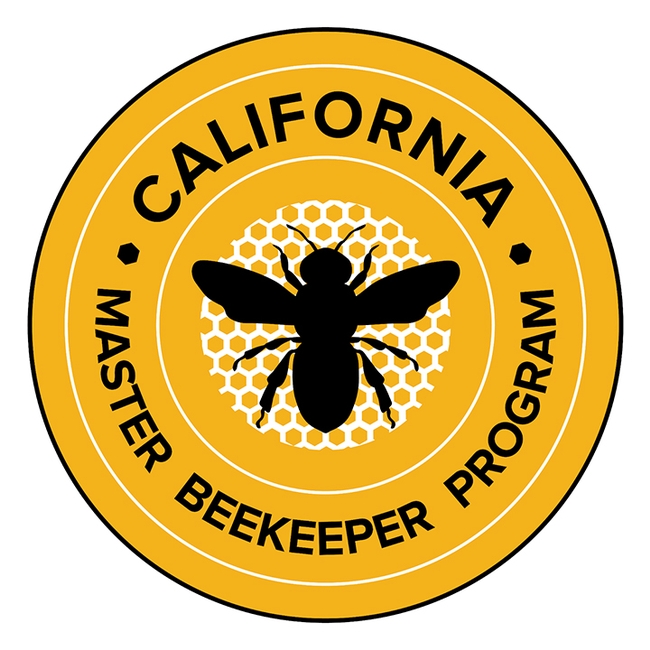
Scholarships. “No money?” wrote the nominators (Kathy Keatley Garvey, Nora Orozco and Tabatha Yang from the Department of Entomology and Nematology). “No problem. (CAMBP) has donated 12 scholarships, worth $250 each; helped novices who can't afford mentoring or equipment by linking them with veteran beekeepers; and is engaging in free bee removals--rescuing and relocating bees.”
Over the past year, CAMBP has developed and expanded its educational materials. This includes launching an asynchronous online course and in-person preparatory programs with its partners. It is updating safety materials and developing an Epinephrine auto-injector/CPR course, geared toward “everyone from 4-H beekeepers to novice beekeepers to the general public,” the nominators wrote.
CAMBP also teaches “schoolchildren about bees at specially guided garden tours at UC Davis, inspiring them “to care for the bees and plant nectar and pollen resources.”
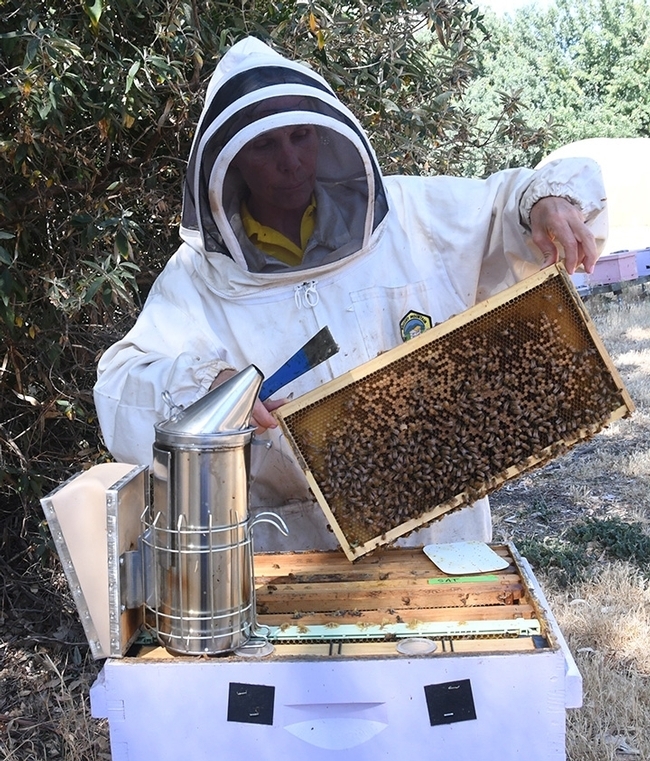
Its website, accessible to the public, offers a list of classes and knowledge-based information, including backyard beekeeping, bees in the neighborhood, bees and beekeeping regulations, defensive bees, live honey bee removals, and protecting pollinators.
“Bottom line,” the nominators concluded, “our ‘B' Team is really an ‘A' Team, an outstanding example of UC Davis teaching, research and service; a team providing exemplary service and contributions; and a team that creates and maintains high morale and embodies the Principles of Community.”
Joint Statement. In a joint statement following the awards ceremony, Mather and Nikzad said: “We share this award with our passionate and caring member volunteers. Our members are deeply committed to honey bee health, science-based beekeeping practices, and, most importantly, to each other. Their enthusiasm and dedication drive our mission forward. We wish to acknowledge Elina Niño for her visionary leadership; she has brought together various stakeholders, including growers, bee breeders, commercial, sideline, and hobbyist beekeepers, as well as the general public, through CAMBP, UC Davis, UC Agriculture and Natural Resources (UC ANR) and UC Cooperative Extension (UCCE). We missed having her at the ceremony.”
At the Staff Assembly ceremony, one other team received a Faculty-Staff Partnership Award Excellence Award: the Graduate Mentoring Initiative, comprised of Ambarish Kulkarni, faculty, Department of Chemical Engineering; Pamela Lein, faculty, Department of Molecular Bioscience; and Elizabeth Sturdy, staff, director of the Mentoring and Academic Success Initiative, Graduate Studies.
Serving as co-chairs of the 2023 Citations of Excellence Committee were Darolyn Striley, manager of the Office of Student Development, School of Medicine, and Mary Carrillo, business operations manager, Languages and Literatures.
Staff Assembly sponsors the annual Citations of Excellence awards program to provide recognition for UC Davis and UC Davis Health individual staff and staff teams “who have demonstrated outstanding achievement in one of the following areas: teaching, research, service, innovation, supervision, mentorship, team awards and faculty/staff partnership award.”
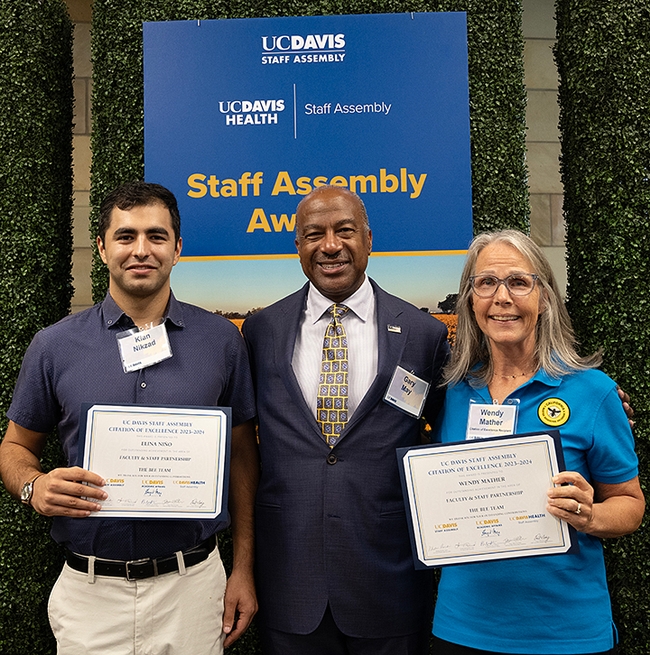
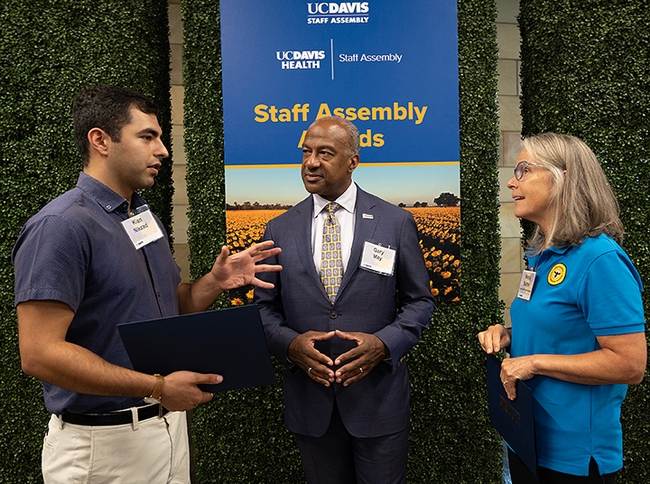
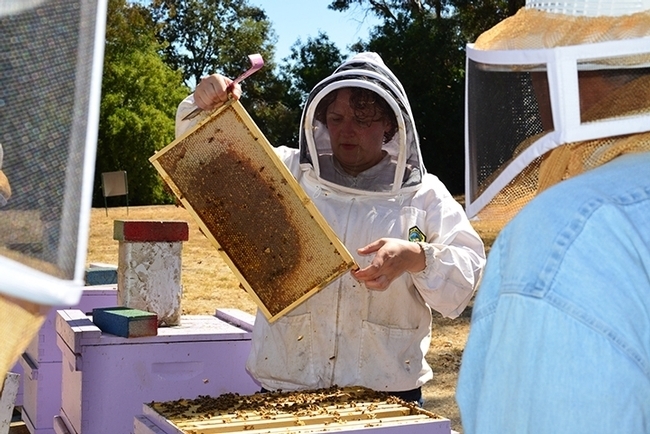
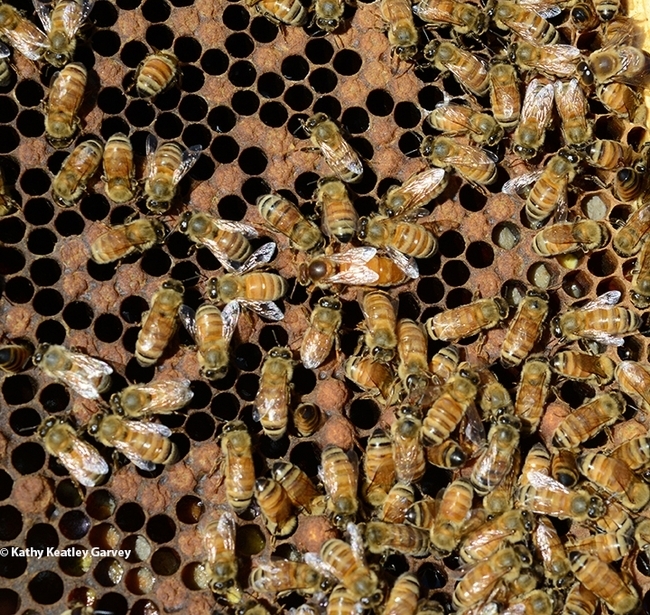
- Author: Kathy Keatley Garvey
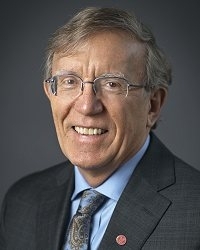
Noted entomologist and UC Davis doctoral alumnus Michael Hoffmann, an emeritus professor at Cornell University known for his advocacy of climate change literacy and the relationship between food and climate change, plus his leadership activities and biological control projects, will deliver the Thomas and Nina Leigh Distinguished Alumni Award Seminar on Monday, Oct. 9 in the Student Community Center, UC Davis.
The Leigh seminar, hosted by the UC Davis Department of Entomology and Nematology, annually honors distinguished alumni. Hoffmann was selected the 2020 recipient, but the COVID pandemic intervened. This is first seminar since the beginning of COVID pandemic.
Hoffmann will present his lecture from 4 to 5 p.m., in Room D, second floor of the Student Community Center. It is free and open to the public and no reservations are required.
An invitational reception and buffet dinner will follow in the Student Community Center.
Hoffmann, who received his doctorate in entomology in 1990 from UC Davis, studying with Professor Ted Wilson and later Professor Frank Zalom, will present the seminar on “Our Changing Menu--Climate Change and the Foods We Love and Need,” the title of a book he co-authored with Carrie Koplinka-Loehr, and Danielle Eiseman in April, 2021.
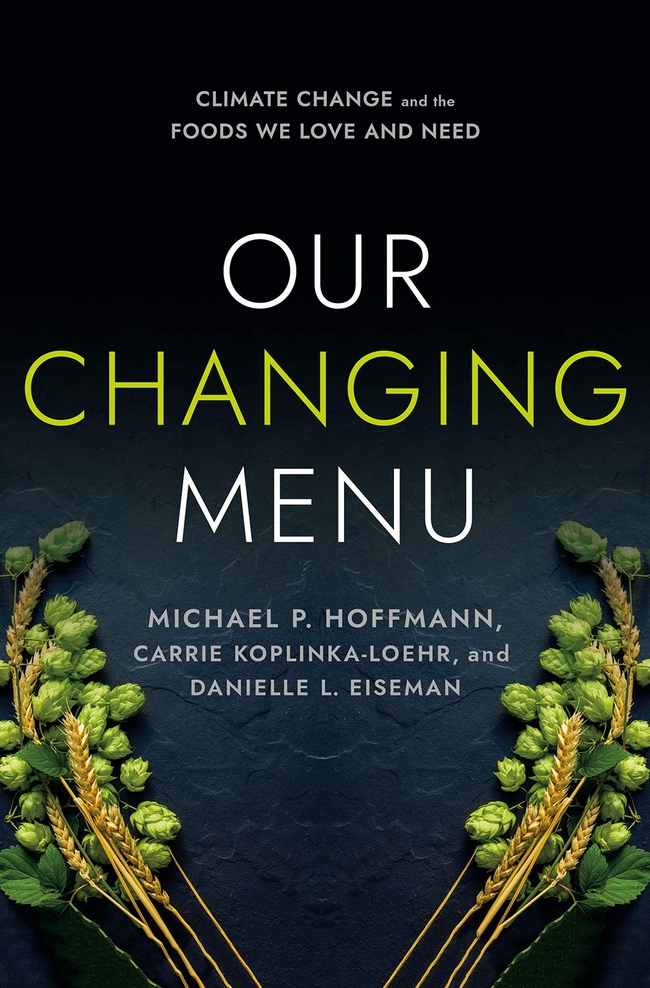
The co-authors "offer an eye-opening journey through a complete menu of before-dinner drinks and salads; main courses and sides; and coffee and dessert. Along the way they examine the escalating changes occurring to the flavors of spices and teas, the yields of wheat, the vitamins in rice, and the price of vanilla." They round out their story "with a primer on the global food system, the causes and impacts of climate change, and what we can all do. Our Changing Menu is a celebration of food and a call to action?encouraging readers to join with others from the common ground of food to help tackle the greatest challenge of our time."
Hoffmann transitioned to emeritus in January 2020 after 30 years at Cornell, but remains active. Serving as executive director of the Cornell Institute for Climate Smart Solutions (2015-2020), he continues to provides visionary leadership, communicates to a wide range of audiences the challenges and opportunities that come with a changing climate, and builds partnerships among public and private organizations.
Hoffmann's leadership activities include co-chairing the President's Sustainable Campus Committee and helping to lead a climate change literacy initiative for students, staff, and faculty. He dedicates his time toward what he calls “the grand challenge of climate change and (to) help people understand and appreciate what is happening through food.” Effectively communicating about climate change, Hoffmann presented a TEDX talk in 2014 on “Climate Change: It's Time to Raise Our Voices” that drew widespread attention.
A native of Wisconsin, Hoffmann holds a bachelor of science degree (1975) from the University of Wisconsin, and his master's degree from the University of Arizona (1978). He served with the U.S. Marines in Vietnam from 1967 to 1971, achieving the rank of sergeant.
UC Davis Experiences. Hoffmann remembers well his experiences at UC Davis. “I was privileged to work with many dedicated faculty in entomology and several other departments.”
After receiving his doctorate at UC Davis, Hoffmann joined the faculty of Cornell in 1990 as an assistant professor, with 60 percent Extension and 40 percent research duties, and advanced to associate professor in 1996, and professor in 2003. His academic career focused on administrative endeavors (80 percent) beginning in 1999.
Hoffmann's career at Cornell included serving as associate dean of the College of Agriculture and Life Sciences, associate director of Cornell Cooperative Extension, director of the Cornell University Agricultural Experiment Station, and director of the New York State Integrated Pest Management Program. He helped initiate a leadership and professional development week-long program that benefited more than 400 faculty at Cornell and beyond.
Prior to his administrative duties, he worked to develop and implement cost-effective and environmentally sensitive tactics for management of insect pests. He emphasized biological control, development and application of insect behavior modifying chemicals, and novel control tactics, all in an integrated pest management (IPM) context. Much of his research and Extension programming was multi-state and multidisciplinary in nature.
Among his entomological achievements, he
- Developed unique, cost-effective and environmentally benign biological control tactics for insect pest of sweet corn, peppers and potatoes, and presented wide scale demonstrations on conventional and organic farms in New York, Virginia, Massachusetts and Canada.
- Published the first popular guide to beneficial insects (64 pages, with more than 5,000 copies distributed)
- Developed patented unique fiber barrier technology for pest control
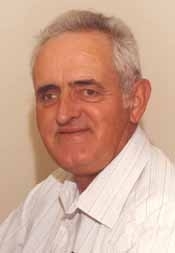
His publication record includes 105 refereed journal articles, nine book chapters, and three books.
Leigh Seminar. The Leigh seminar memorializes cotton entomologist Thomas Frances Leigh (1923-1993), an international authority on the biology, ecology and management of arthropod pests affecting cotton production. During his 37-year UC Davis career, Leigh was based at the Shafter Research and Extension Center, also known as the U.S. Cotton Research Station. He researched pest and beneficial arthropod management in cotton fields, and host plant resistance in cotton to insects, mites, nematodes and diseases. In his memory, his family and associates set up the Leigh Distinguished Alumni Seminar Entomology Fund at the UC Davis Department of Entomology. When his wife, Nina, passed in 2002, the alumni seminar became known as the Thomas and Nina Distinguished Alumni Seminar.
Leigh joined the UC Davis Department of Entomology in 1958, retiring in 1991 as an emeritus professor, but he continued to remain active in his research and collaboration until his death on Oct. 26, 1993. The Pacific Branch of the Entomological Society of America awarded him the C. F. Woodworth Award for outstanding service to entomology in 1991.
Resources:
'Our Changing Menu': Warming Climate Serves Up Meal Remake" Cornell
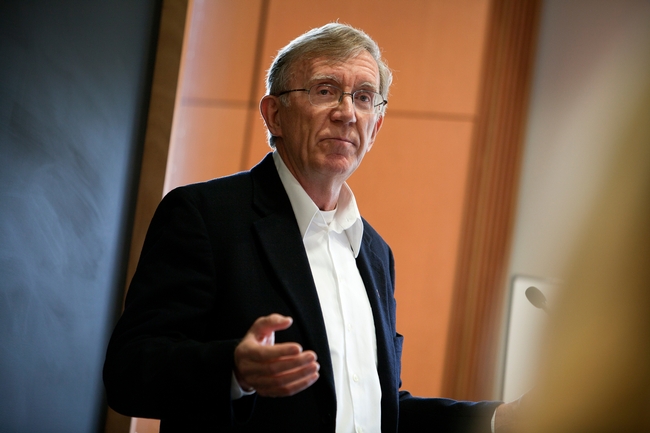
- Author: Kathy Keatley Garvey
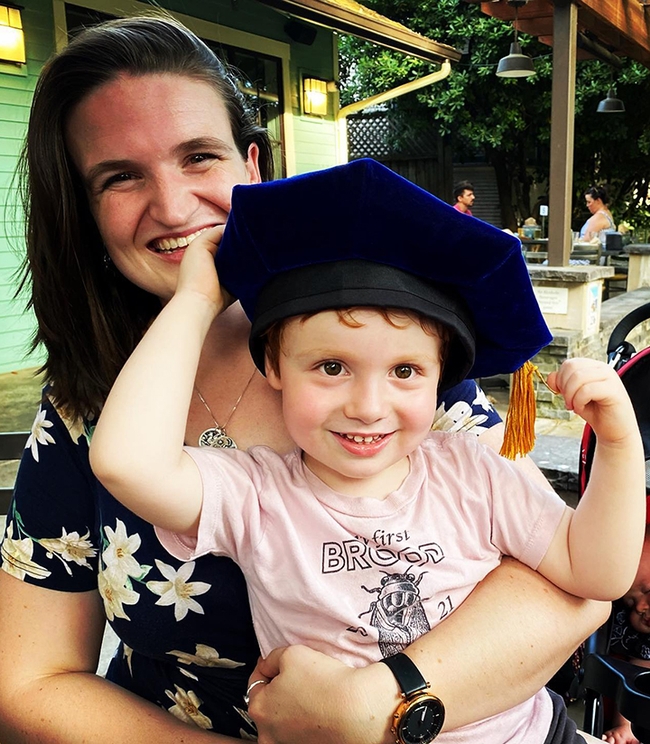
"Graduate Studies Class of 2023, you give us faith that a better tomorrow is possible," Chancellor May told them. "You are the innovators, the researchers, the scientists, the artists, the leaders and the visionaries of tomorrow. The world needs you and you have so much to offer."
"No matter what field is your specialty, UC Davis has prepared you for the next chapter," he continued, adding that "Each of you has one thing in common. You graduated from a world-class university that fully embraces intellectual curiosity and versatility."
The chancellor then asked the graduates to remember "three things":
- "You are not alone. You are an Aggie. You are part of a community of 290,000 members spanning the globe."
- "With a little imagination, collaboration and concerted effort, you can change the world."
- "Everyone has their own unique super powers. Continue to use yours for good."
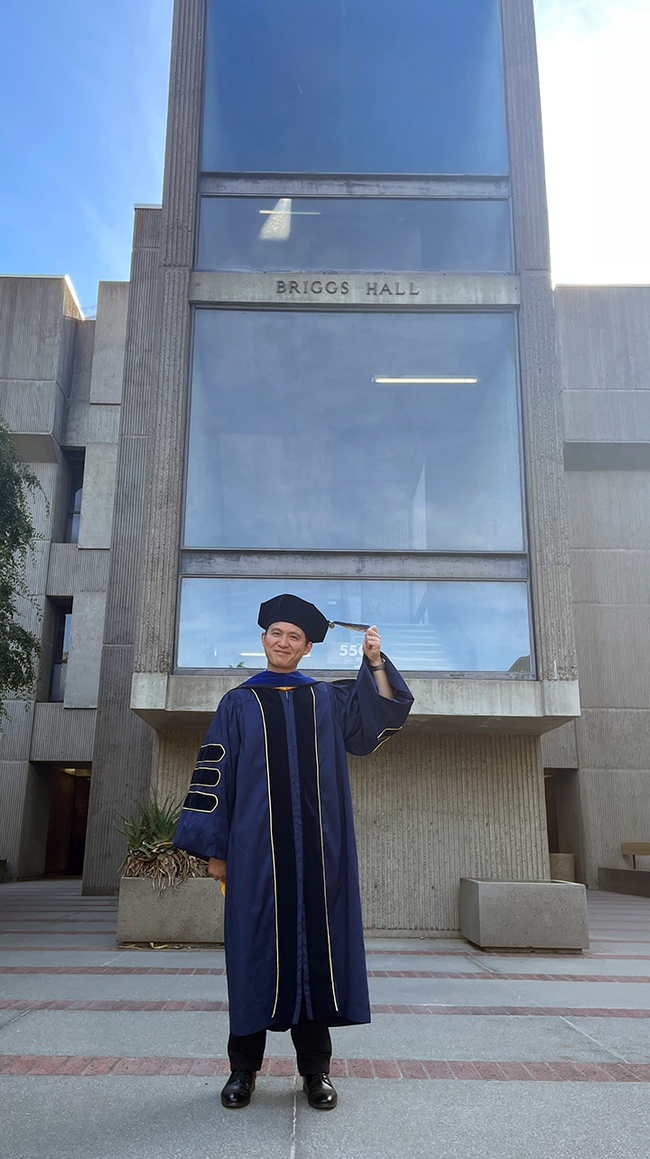
Smiles, laughter, and cheers punctuated the event. Some of the graduates decorated their mortarboards. Entomology students favored insect antennae.
It was especially heartwarming for Charlotte Herbert Alberts, who enrolled in the UC Davis doctoral program in 2015. During her studies, she married her sweetheart, George Alberts, in 2018; moved cross-country in 2020 during the COVID pandemic; gave birth to two children (Griffin, now 3, and Marcy, 7 months); and published two of her dissertation chapters. The family lives in Silver Spring, Md.
Griffin could hardly wait to see "Mama become a Wizard." Following the commencement, he delighted in trying on what he called "Mama's Wizard Hat." The next day, when his grandparents asked him his favorite part of the ceremony, he quickly responded: "Watching Mama become a Wizard!"
"It was great closure to walk across the stage!" said Alberts, who enrolled in the entomology graduate program in 2015. "It was a non-linear adventure, with many bumps and hurdles along the way. But it's amazing feeling to finally cross the stage and be done! Especially with my parents, George, and my children watching! I couldn't have done it without their--and many others'--support! I currently work at the Smithsonian publishing my last two chapters of my dissertation. I'm applying to post docs in the fall and taking the summer to enjoy time with my kids as much as possible!"
Here are photos from the commencement shared by graduate students and professors.
